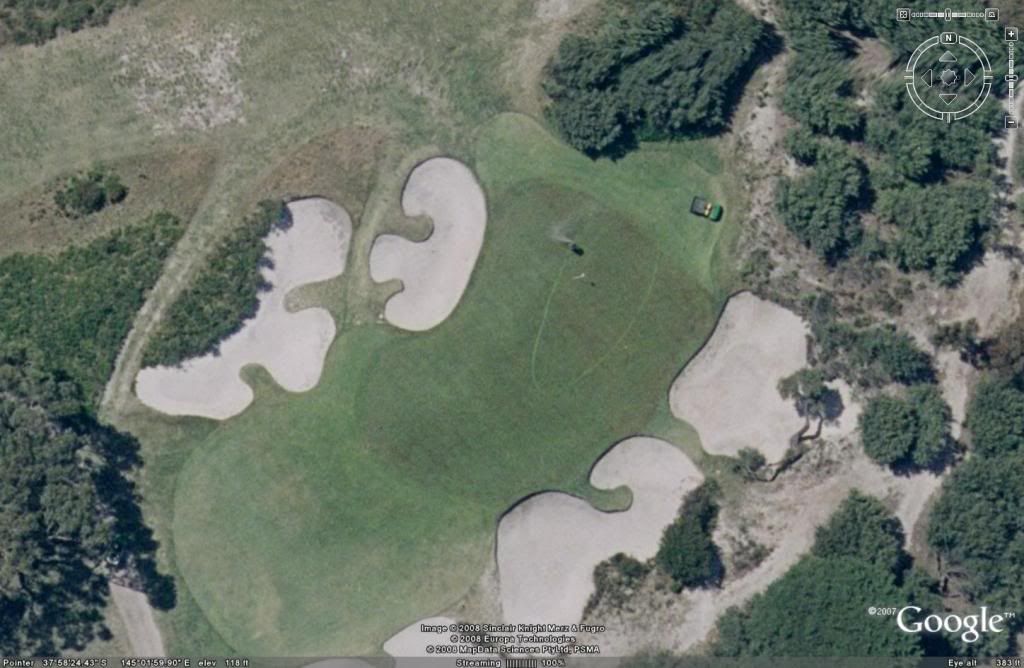Apologies if this has been covered ad nauseum -- blast that search function! -- but what do others think of "eat-in" bunkers, i.e., bunker bays that eat into green surfaces (or appear to)?
I find this MacKenzie form of visual intimidation to be very visually intimidating. (Is this one of his lessons learned from study of camouflage?) Superior in fact to every form of intimidation, for these bunker bullies don't lead to death by drowning -- the more-commonly used form of visual intimidation!
The beauty of the tactic is when you combine it with enormous greens, because carnivorous bays:
1. Reduce the size of the target without reducing pinnable area. You can stick a flag behind one of these bunkers and dare the golfer to take a huge risk, or play it safe by hitting away from the flag. This challenges the expert golfer who wishes to go at the flag tucked near or behind a bunker, while still providing plenty of room for the chop to play away from the flag yet still hit the green.
2. Reduce the
apparent size of the target, creating a form of terror from which the golfer nevertheless can recover (unlike water).
3. Provide for enormous variety of challenge from day to day.
4. Dish out punishment in proportion to the miss. As bad as a ball in the bunker is, a ball on the other side of the bunker is even worse!
Upon closer inspection, small collars do appear between green proper and bunker; however, the visual intimidation remains plus the bunkers very much are in play.
Why are so many bunkers elsewhere "offset" from the green? On links it's true that offset bunkers may draw in shots; however, they are offset.
I realize these types of bunkers may be more expensive than other types! Still, the cape-and-bay style is not rare -- why don't we see them eat right into the greens?!
Is there something wrong with eat-in bays? Do clients hate it? Does it take some kind of special talent to build?
Why don't we see more big greens that use carnivorous bays to increase visual intimidation and make the greens play smaller for the expert golfer who would take on the challenge?
And lastly, can anyone post examples of this from other architects?
Green looks small from tee -- cue theme from "Jaws"... ...but appears much larger when you get on top of the thing: green is 35 yards deep by 20 yards wide (from bunker to bunker), roughly 6,500 square feet for a hole 175 yards in length
...but appears much larger when you get on top of the thing: green is 35 yards deep by 20 yards wide (from bunker to bunker), roughly 6,500 square feet for a hole 175 yards in length





